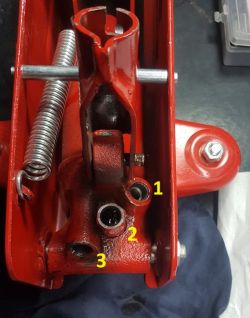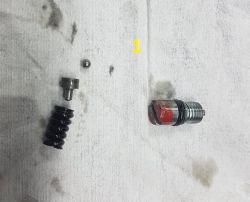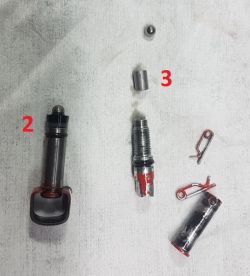Hello, colleagues, I have a hydraulic lift as in the photos. I took it apart, replaced the o-rings with new ones and the effect was the same. Those, the lift empty when raised to the very top, begins to descend despite the fact that it should not. The oil is max. There is air in it. What could this be happening? What could be wrong? I don't know how item 3 should be folded? Just like in the picture or maybe the ball should be inside? Because it fell out and I don't know how it was. But I put it together anyway and it didn't work. Oil leaks are nowhere to be found. What could be wrong?








